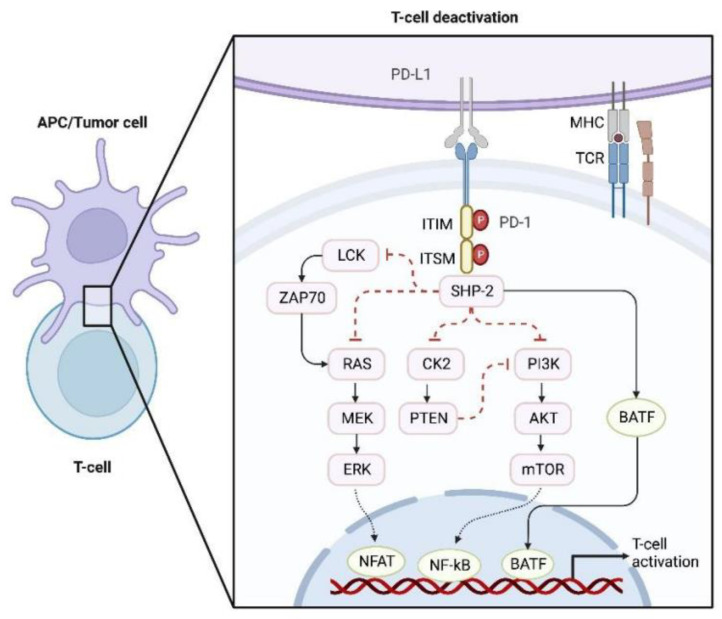Figure 1.
PD-1/PD-L1-mediated inhibition of T cell activation. The binding of PD-1 to PD-L1 recruits SHP-2, thereby weakening the TCR signaling pathway mediated by LCK and inhibiting the RAS-MEK-ERK and PI3K-Akt-mTOR pathways. In addition, PD-1 activation induces the expression of BTAF, which inhibits the expression of effectors for T cell activation. Collectively, the activation of T cells can be inhibited by PD-1/PD-L1-mediated inhibiting of these signaling pathways. Abbreviations: PD-1, programmed cell death protein 1; PD-L1, programmed cell death 1 ligand 1; TCR, T cell receptor; MHC, major histocompatibility complex; APC, antigen-presenting cell; ITIM, immunoreceptor tyrosine inhibitory motif; ITSM, immunoreceptor tyrosine-based switch motif; P, phosphorylation; LCK, lymphocyte-specific protein-tyrosine kinase; ZAP70, zeta chain of T cell receptor associated protein kinase 70; SHP-2, src homology-2 domain-containing protein tyrosine phosphatase; BATF, basic leucine zipper transcriptional factor ATF-like; RAS, rat sarcoma; MEK, mitogen-activated extracellular signal-regulated kinase; ERK, extracellular regulated protein kinase; NFAT, nuclear factor of activated T cell; CK2, casein kinase II; PTEN, phosphatase and tensin homolog; PI3K, phosphoinositide 3-kinase; AKT, protein kinase B; mTOR, mammalian target of rapamycin; NF-κB, nuclear factor kappa-B.

